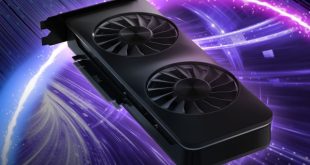The Galaxy GTX 460 GC (Galaxy Clocked) card we have here today is a factory overclocked edition with the core speed of 700 MHz and the memory clock increased to 1848 MHz. The reference 460 cards ship with the core clocked to 675 MHz and the memory clock of 1800 MHz. Galaxy have modestly increased this speed to 700 MHz and 1848 MHz .
The GTX 460 comes with either a 192bit memory bus or a 256bit bus, this particular 768MB Galaxy card uses a 192bit bus which is the lesser of the two. When we do our testing we will be focusing solely on a 1080p resolution and don't anticipate a big hit in performance with the 192bit memory bus. If on the other hand we were pushing the card up to the maximum resolution of 2560×1600 pixels, the lower bus width would have a bigger impact. After seeing the speeds of other overclocked GTX 460's we anticipate that there is still room to take this card even higher.
NewEgg.ca has the Galaxy GTX 460 GC 768 MB currently priced at just over $160 CDN which qualifies as a mid range card, but as we have seen with our other GTX 460 reviews these cards are capable of offering some serious performance. We plan to find out if the Galaxy GTX 460 GC 768 MB card will meet our expectations or fold up under the pressure. To get started we are going to take an up close look at the card and the features it brings with it.
The Galaxy GTX 460 GC is a very easy to spot thanks to the unique design they have chosen. The heatsink is completely enclosed by a greyish-blue molded plastic outer shell except for the removable 9 blade center mounted cooling fan. If we were to try and describe the design it would be a futuristic and rugged military grade component ready to provide the graphics power to a system used on the front lines; specifically designed for battle simulation training.
The back side of the card has very little to offer us as all the important components are mounted and enclosed on the front side of the PCB.
Here we can see the heatsink used on the Galaxy GTX 460 GC. It is a dual heatpipe design with a multitude of aluminum fins used to dissipate the heat. Thanks to the vented portion of the faceplate used on this card, some of the hot air will be expelled outside our chassis. The fan on this card can actually be disconnected for cleaning purposes but make note that when we re attach the fan it can be somewhat tricky to route the 2 wires back into a position that won't interfere with the fan blades. To be perfectly honest with the fan raised in an upright position, access to the heatsink is pretty much the same as removing it, so really there is no need to disconnect it in the first place.
The Galaxy GTX 460 GC has 2 DVI connections that are capable of a 2560×1600 maximum resolution. There is 1 mini HDMI port and the top half of the faceplate is vented to let the hot air escape.
The card requires 2 – 6 pin PCI-e power connections to supply the appropriate amount of juice to needed to run at it's full potential.
When it comes to multiple card configurations there is only 1 available SLI connection. This means these cards are limited to basic 2 way SLI and no 3 or more card SLI configurations. AMD have done this with their 6800 series as well so we suspect that market studies indicate not enough systems are using 3 or 4 card configurations. While some may see this as a limiting factor we have no doubt that a 2 card SLI configuration would be ample to deal with pretty much any of the games available today.
 KitGuru KitGuru.net – Tech News | Hardware News | Hardware Reviews | IOS | Mobile | Gaming | Graphics Cards
KitGuru KitGuru.net – Tech News | Hardware News | Hardware Reviews | IOS | Mobile | Gaming | Graphics Cards








